So, you would like your portrait painted
…but you’re not sure where to start. Commissioning a portrait painting should be an enjoyable and rewarding experience, and need not be an expensive luxury. It is a collaborative exercise where you should feel fully involved in the creative process.
So what is a portrait?
A well observed portrait can be many things, and is not just a photographic likeness. It can allude to past achievements or show your dreams for the future. It can be a lasting record of a special moment in your life, like a wedding, an anniversary or a pregnancy. It might celebrate a relationship. It can even be a powerful statement about your ideas and beliefs. A professionally produced portrait should last for generations, surviving as a very personal record of your life.
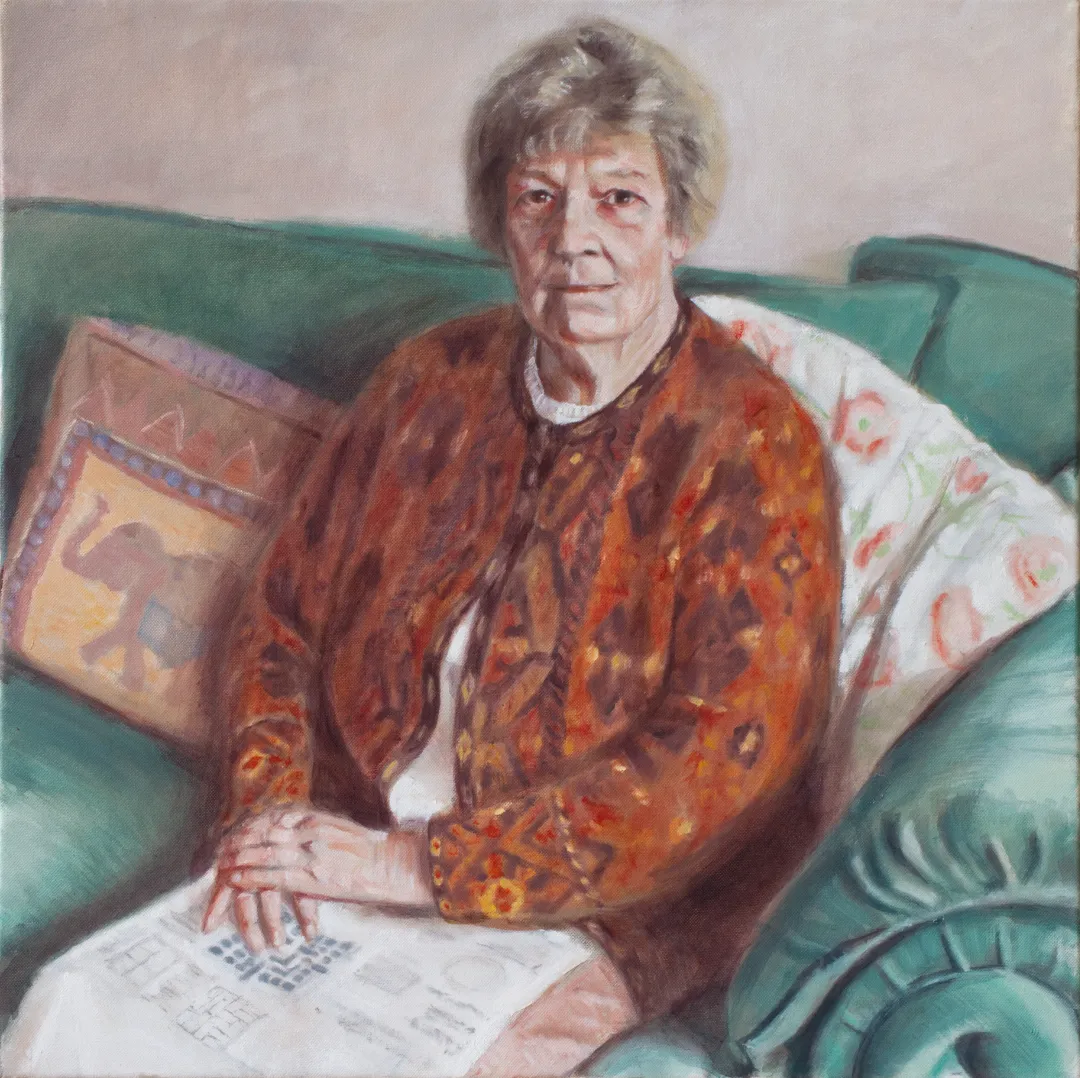
The portrait above is of my mother doing the Sunday Telegraph crossword, which she did her whole life. She’s sitting in her favourite chair, wearing her favourite M&S cardigan.
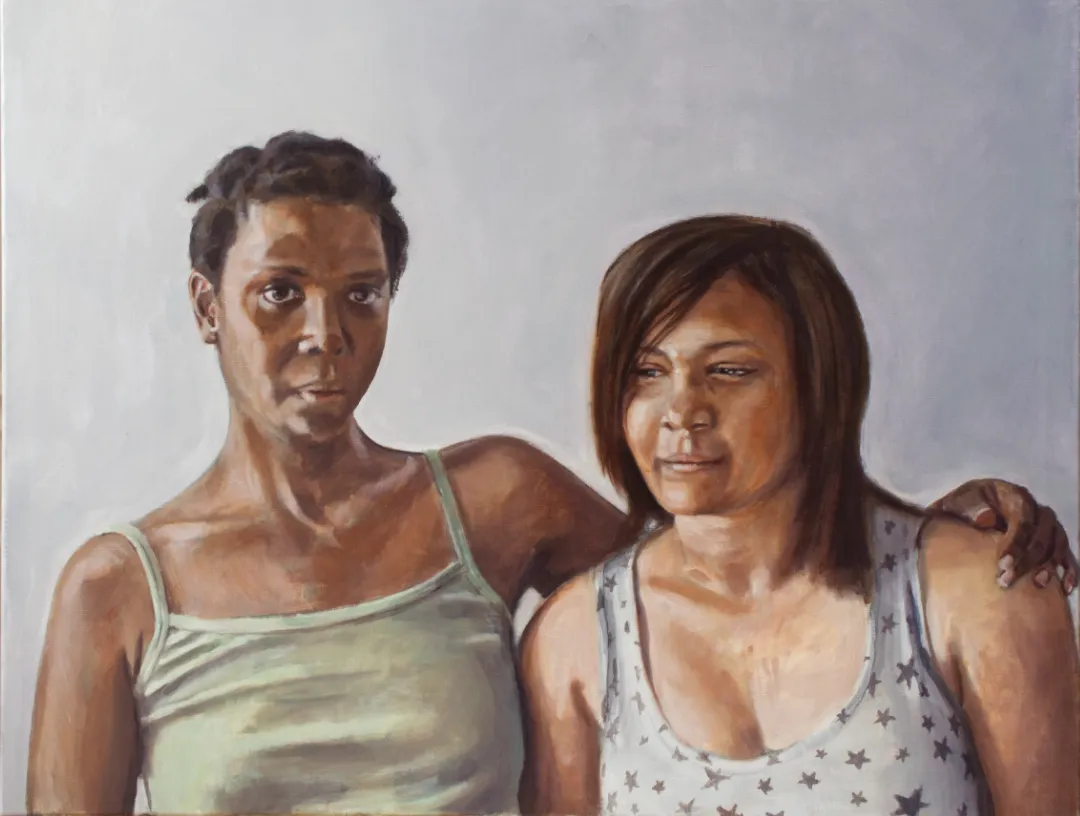
The portrait above is of my late partner Veronica, with her daughter. The painting was started when Veronica was quite ill, and finished posthumously.
How to find a portrait artist
You will want to find a portrait artist whose work you like. Artist led art fairs are a nice way to see new art and meet the artists. Local group shows are another opportunity to see artist’s work in real life, rather than on your phone screen. Instagram used to be a wonderful tool for artists to connect with an audience, but sadly it has become overrun by fake accounts. If you find an artist on Instagram, please do try to verify their identity by another means.
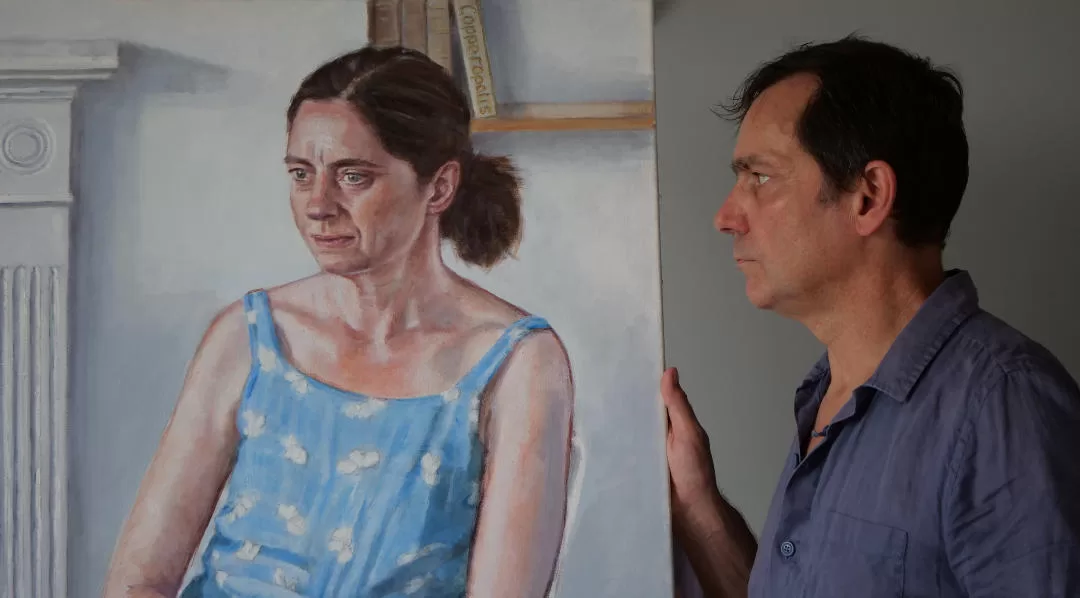
A few things to think about when planning a portrait.
- Style: are you going for a relaxed or more traditional pose? Should you wear casual or formal clothing? Your choice of clothes can say a lot about you, and should be given some serious consideration, even if you then choose to wear a plain t-shirt and shorts.
- The pose: Full figure, half figure, or head study? More than your clothing and the setting, your pose will set the tone of the painting and say the most about you. This is why the initial sitting is so important – it can take quite some time working out how you want to be painted.
- Size: Where will you hang the painting? Are you going for impact? Or do you only have a limited space to hang the final work.
- The setting: The sitter is often more comfortable posing in their own home. A well considered background, whether it is an actual place or an imagined location, can say quite a lot about the sitter. Carefully placed objects can do the same thing.
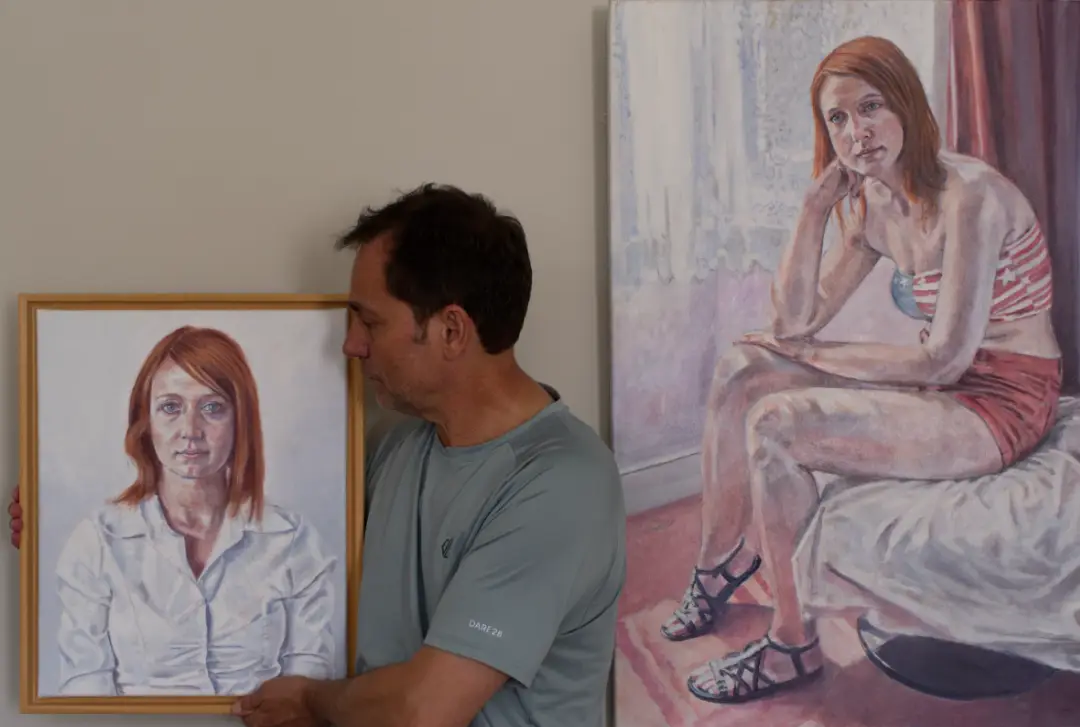
You are not sure how you want to be painted
It doesn’t matter if you can’t decide on the details – I’m happy to advise. We can progress to a sitting with just an agreement on canvas size and price, and work out the other details during the sitting. It all depends on how the sitter wants to be portrayed – which face they want to show to the world: corporate businessperson; loving partner; scholar; explorer; party animal.
Risk free.
The final price is agreed before I start. I only require a deposit of 25% to secure your commission. This mainly covers the cost of materials.
Email me at dalessandri@gmail.com for more information.
Satisfaction guaranteed.
If you choose to commission a portrait painting, I will only ask for final payment when you are happy with the finished painting.
FAQ
Can you paint a portrait from photos?
Yes, I can paint a portrait from photos. I prefer to have an in-person sitting, but I understand that it’s not always possible. I am happy to give advice about taking new photos, and can even give directions via a videocall. It usually helps to provide a number of photos, and even video, which can give me a better idea about the sitter’s demeanour and mannerisms.
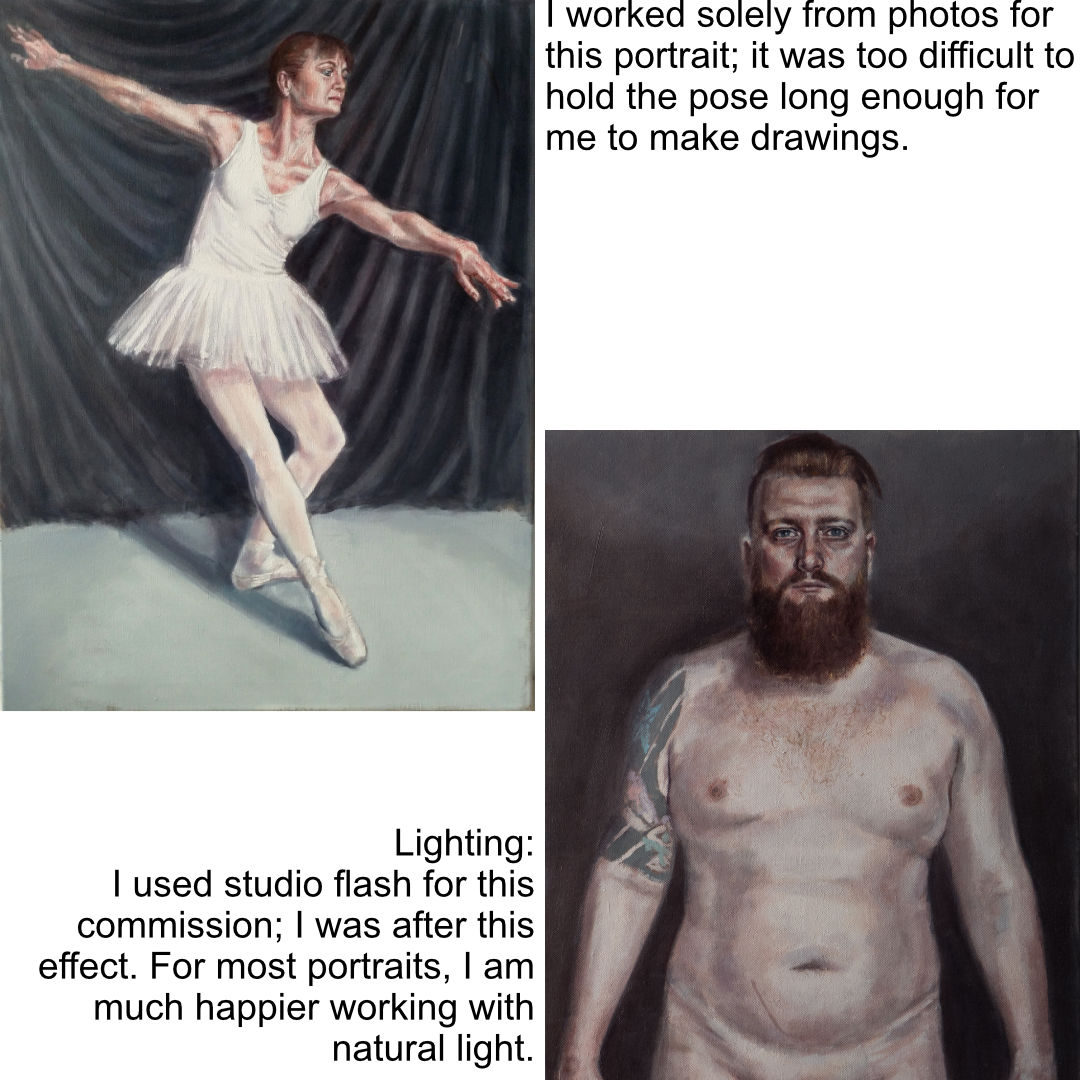
How many portrait sittings are required?
Ideally, if you are able to pose “in person”, I would like at least one sitting, lasting about 3 hours. I spend this time working out the best pose, then making drawings, and also getting to know the sitter. At the end, I will take some reference photos.
I find this session is an important stage in the creative process. The act of looking and drawing will teach me far more about the sitter than a single photo can. I usually get enough material in one sitting to complete the painting. However, I do like to have the option for a second sitting, as sometimes I may think of minor changes during the course of painting.
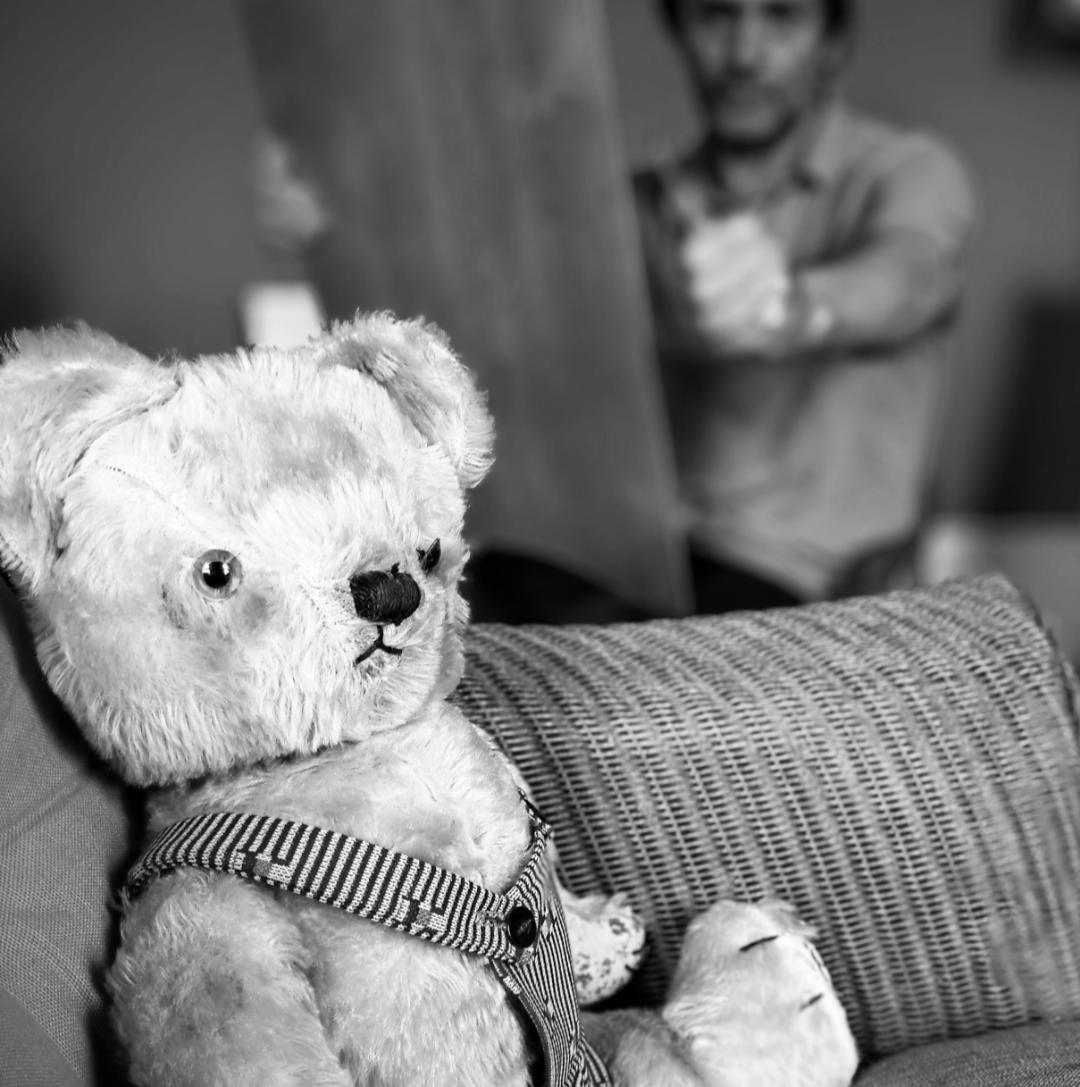
Where will the sitting take place?
I’m happy to travel to a client’s home for a sitting. The sitter is usually more relaxed in their home surroundings, and you may prefer to be painted in a particular room. If outside East Sussex or London, I may have to charge additionally for travelling expenses. Alternatively I have a comfortable space for sittings in Eastbourne.
So, you still want to commission a portrait painting, but now you know what to do.
Find an artist.
Contact an artist.
Discuss what you want.
Portrait painting price guide
I have a price guide for portrait commissions on this page: How Much Does a Portrait Cost?
Some examples of my artwork can be found on my Portraits page.
If you like my work and have any questions about commissioning an artwork, please get in touch at dalessandri@gmail.com










